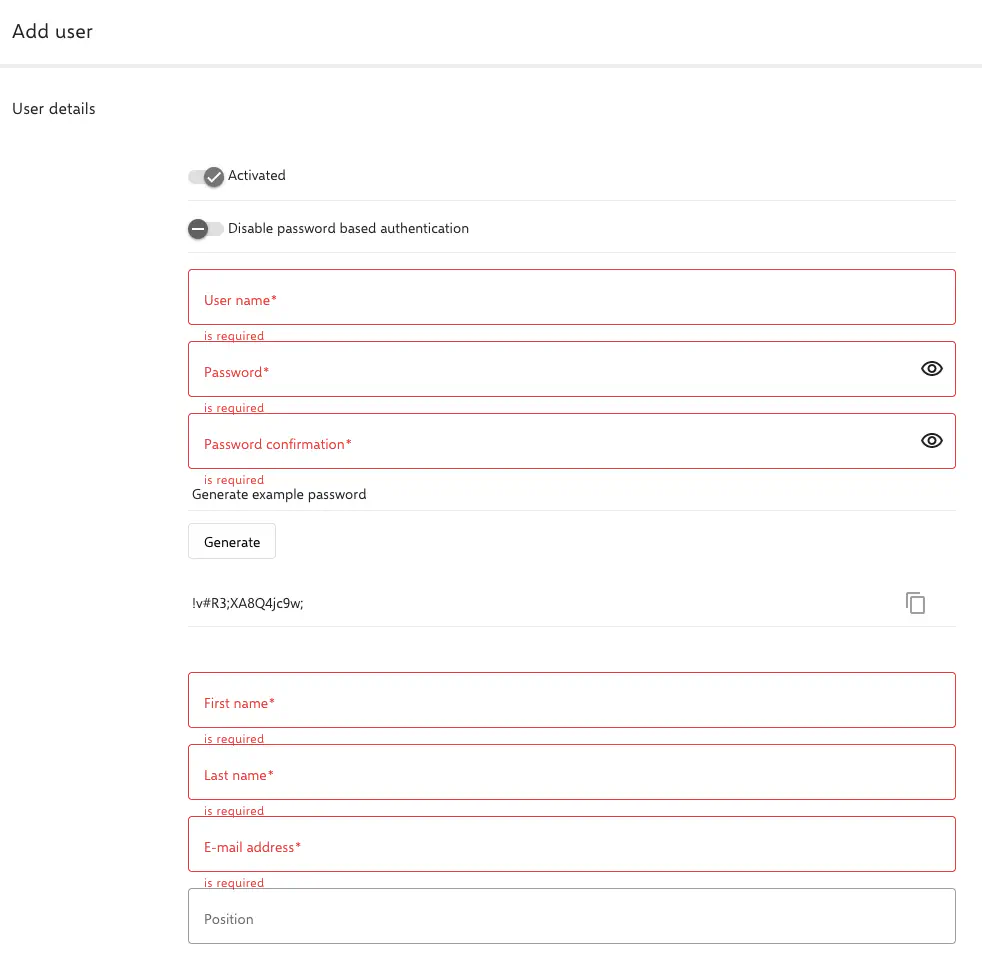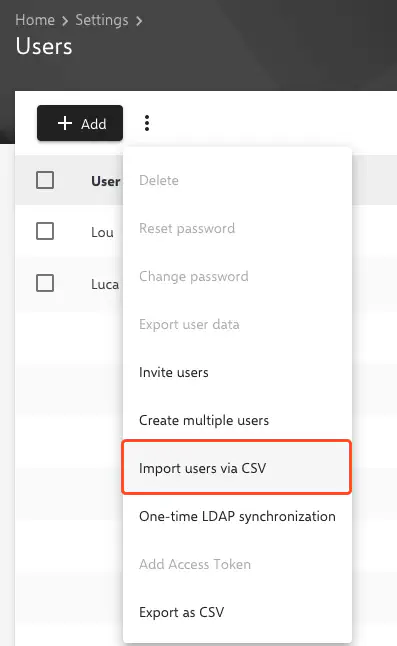Usermanagement
Introduction
Relution has an internal user administration that allows user accounts to be created manually or added by external providers. There are a few things to note here and some special features which are explained below.
Users in general
Each user is created in an organization in Relution. It cannot be stored in several organizations at the same time. Multi-client capability can be configured for administrative accounts. Ultimately, however, the user account is always stored in the original client. Each user account in Relution is saved in the database. It is necessary for mail addresses to be unique. It is not possible to create user accounts that have the same email address as an existing user account.
Adding user accounts
There are several ways to add accounts.
- manual creation of the account.
- upload a CSV file with user accounts.
- connection to external providers such as LDAP and/or AzureAD.
Manual creation of user accounts
In the ‘Users’ section, click on the ‘Add’ button to open the mask. All mandatory fields must be filled in here.

In the lower section of the mask, it is possible to fill in up to 15 user-defined fields. This can be useful, for example, for the later use of variables in guidelines.
You should not forget to define authorizations and groups. In Relution, individual authorizations can be viewed in a matrix in the corresponding section. Further information on authorizations can be found in the section of the same name in these instructions.
Upload a CSV file with user information
To create user accounts via a CSV upload, click on the corresponding link in the user overview.

In the following dialog, you have the option of downloading a CSV template. In the example, two lines of the CSV file are already filled.

Again, only the mandatory fields need to be filled. These are: name, email, givenName, surname and password. Other columns can be removed if they are not required.
After uploading the CSV file, groups can be selected that are to be assigned to the new accounts to be created. Click on ‘Import’ to save the user accounts in Relution.
The required password length under ‘Settings > Login data management > Minimum password length’ must match the password length in the csv.
Connection to external providers
If an external provider is connected to Relution, it is always the leading system. Content that is imported from an LDAP, for example, is updated if it changes on the provider side. Many fields, such as ’e-mail address’, cannot be changed, as the content would be overwritten during the next synchronization. In the event of a login, Relution always authenticates against the configured LDAP. If the connection is not available, users cannot log in at this point. The configuration of the connection is explained in detail in the corresponding section of these instructions.